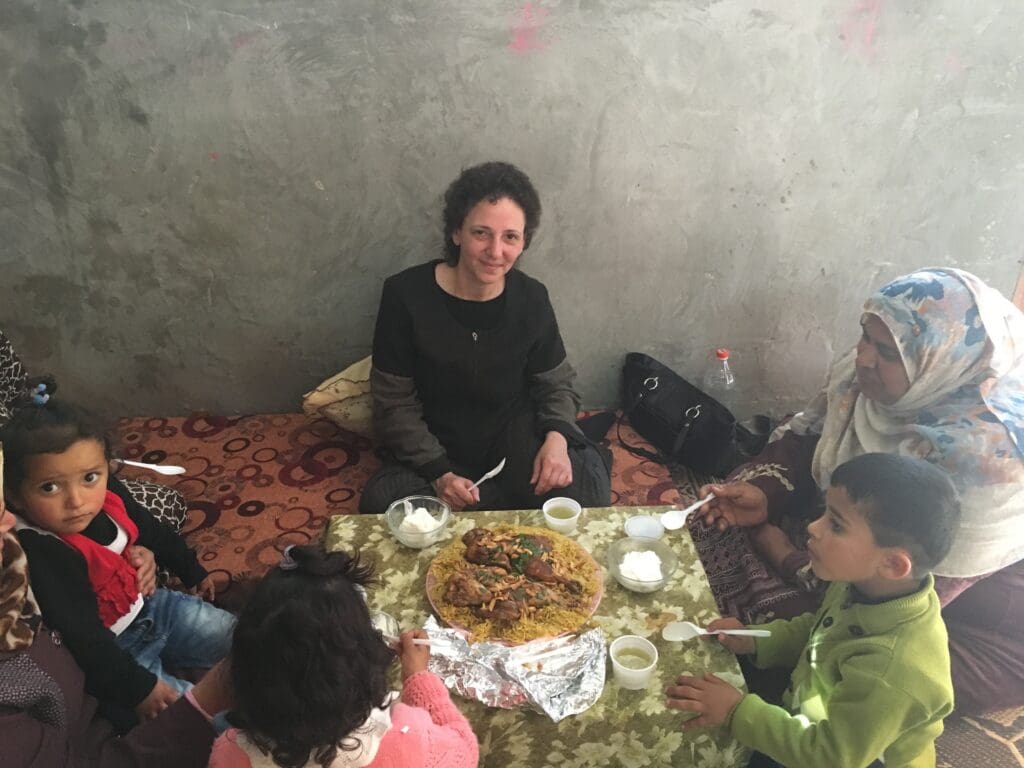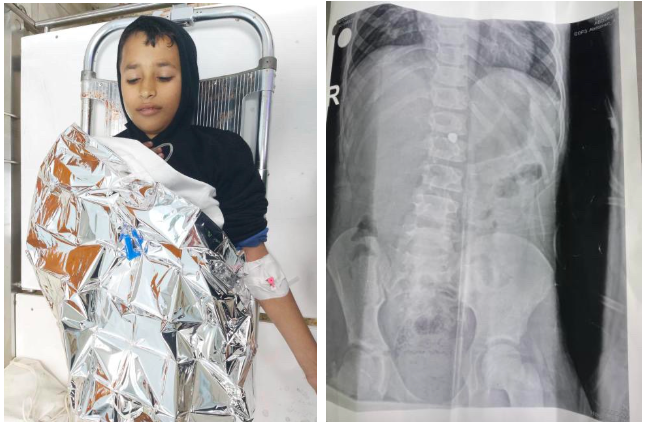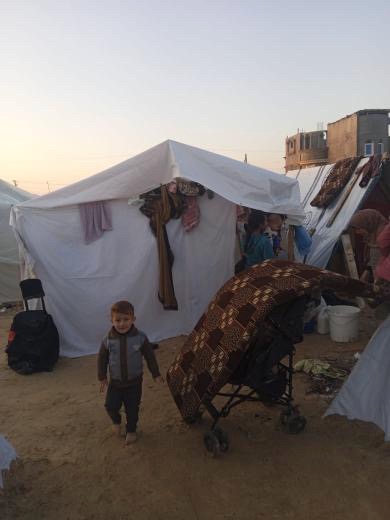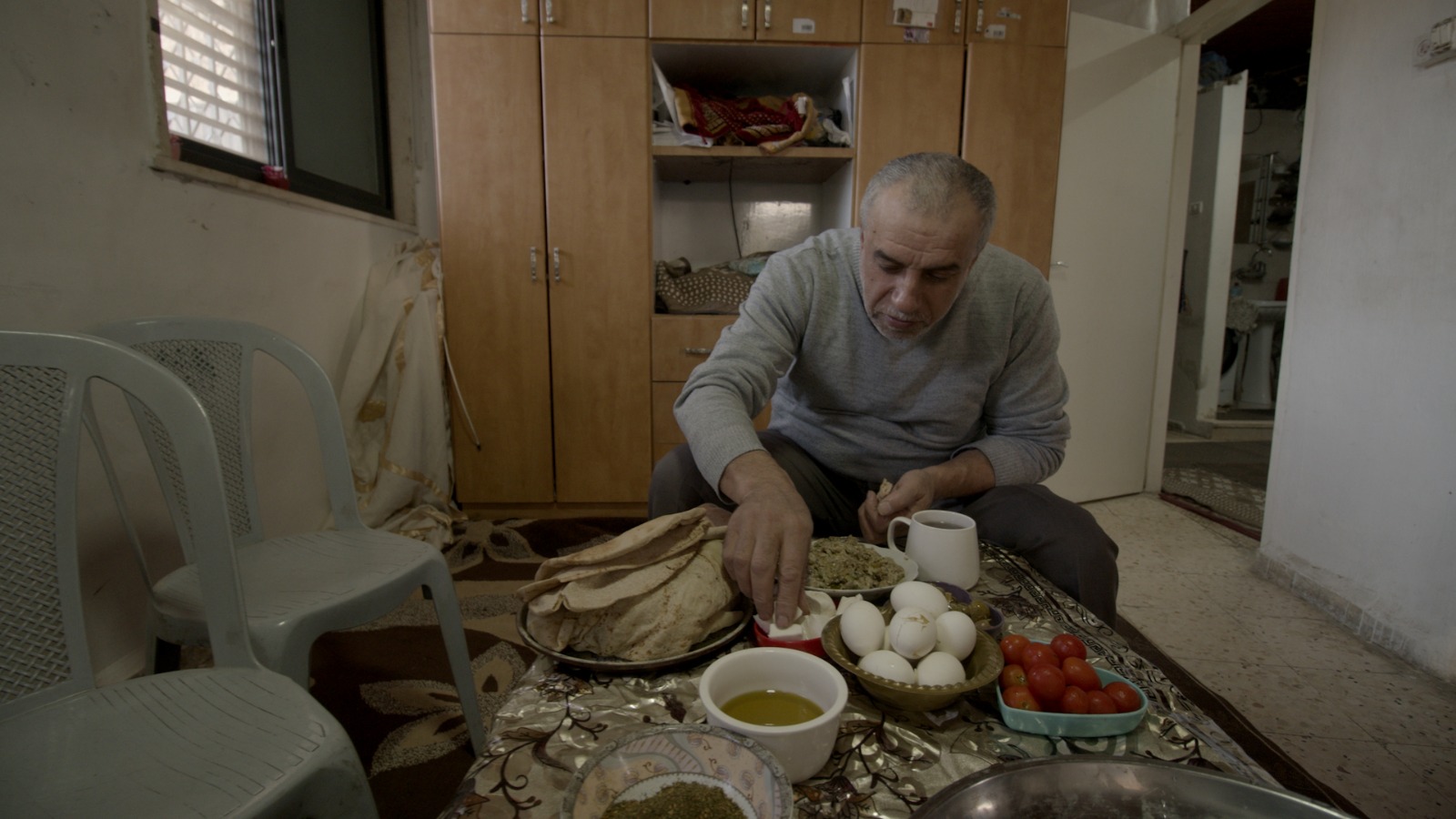It’s hard to visit the Gaza Strip and not fall in love with the people. Sadly, very few people get the opportunity to visit. Israel has controlled the checkpoints with a heavy hand since they imposed a siege and blockade in 2007. They only approve a small number of permits to enter and exit, and only for very specific and self-interested reasons.
I was extremely fortunate to get consultancy jobs that took me to Gaza several times. I used those opportunities to develop a now-defunct project called Aid Watch Palestine–perhaps the most exciting grassroots advocacy I’ve ever gotten to work on. Community members learned how the international aid system constrained their lives (in addition to the Israeli occupation), and they took action to claim their rights from international donors.
In 2015, on one of these trips, I met the Abu Jamous family in Khuzaa near Khan Younis. Marwan and Hanady’s family was one among thousands whose homes were destroyed in the 2014 Israeli attack on Gaza and who were poorly served by the international humanitarian response. I wrote an article about their experience to bring attention to the problem. They were also represented in my photo essay of 2016.
I stayed in touch with the family over the years, celebrating the birth of each new child, fretting about their many health crises, following their creative efforts to take care of one another despite having insufficient resources. In 2017, I wrote another article describing the family’s unacceptable living situation resulting from the ongoing blockade and the lack of proper help. Also in 2017, Hanady’s brother helped my group create a powerful, short video infographic showing that the only way to genuinely help Palestinians in Gaza is not to provide humanitarian aid, but to end the Israeli blockade.
I stayed in touch with Fathi too, congratulating him when he married and had a son, and stressing when he decided to smuggle himself out of Gaza with the intention of reaching Lesbos for asylum. It was harrowing and dangerous but ultimately successful, and that’s how Fathi found himself outside of Gaza on October 7th. Marwan was also outside of Gaza on October 7th, getting much-needed medical care in the West Bank. When the bombs started falling, the women of the family bore the brunt, trying to protect themselves and their children, even though there was and still is no place that is safe from Israel’s indiscriminate violence. (Marwan was abducted by the Israelis from the hospital in Nablus and thrown back in Gaza in the midst of the bombing. He’s now with the family but sick, having not completed his medical procedure.)
I had hoped my friends in the Abu Jamous family would at least be spared from the worst of the violence, but they weren’t. With much difficulty, the family of 36 people (Marwan’s family and Fathi’s family, including all their brothers and sisters and their spouses and children and parents) were finally able to escape Khan Younis to go to Rafah. Although it was supposedly (but not really) safer, Israeli soldiers confiscated all their belongings at the checkpoint entering Rafah, and they started shooting randomly.
Fathi’s 10-year-old nephew Anas was shot in the back by Israeli soldiers.
Anas went back to Khan Younis with his father to the European hospital while the rest of the family moved forward, setting up three tents between Khan Younis and Rafah – one for the many men of the extended family, one for the women, and one for the children. Anas got x-rays that confirmed the bullet was lodged in his spine. My friend in Boston, a prestigious spine surgeon, reviewed the images and said that Anas needed surgery immediately. He needed to be moved out of Gaza, but not on a commercial flight. His spinal fluid needed to be monitored. He needed to be catheterized. He had to be moved carefully to preserve the possibility that paralysis might be avoided, and he needed the bullet removed to avoid lead poisoning.
Naive me got to work trying to get Anas moved to another country for treatment. A pediatrician friend liaised with the doctors at the European Hospital who explained that Anas had been put on a list. The Israelis would need to approve his transfer. Visas would need to be secured. A foreign hospital would need to admit him. Funds would need to be raised. And more relevant – there were thousands on the list before Anas.
Fathi told me that the hospital was releasing Anas back to his family, back to the tent where he would sleep on the wet ground. There was no point in keeping him in the hospital since they didn’t have the material or tools to treat him. They don’t even have paid medication to treat the poor kid; he cries constantly from the unbearable pain.
As of this morning, though, Anas is still in the hospital in Khan Younis. When they ultimately ask him to leave, he will return to a family that has no shelter, insufficient food and water, no access to medications, no money for diapers, and no prospects – because Israel continues to deny these basic rights, even while they continue bombing, despite the warnings of the International Court of Justice.
No child should be shot. Anas was shot in the back! He was shot by Israel while following Israeli orders to move to Rafah!! Anas was learning to play soccer. Anas loved playing soccer.
If you would like to help Anas and his family, please contact me at nora@noralestemurad.com. I have a secure way of getting money to them that is still working. It won’t help Anas walk, and it won’t make the family safe from the ongoing genocide, but it may in some small way lift the family’s spirits to know that we care and we wish them the best.
Even if you can’t help Anas, PLEASE help stop the violence in Israel/Palestine by calling on the your governmental representatives to demand their constructive intervention. If you live in the United States, tell your senators and congressional representative to call for: an immediate, sustainable ceasefire; release of all captives in Israel and Gaza; Israeli facilitation of humanitarian aid, including medical; resumption and expansion of US aid to UNRWA; an end to US weapons transfers to Israel until they comply with all international law; facilitation of accountability for Israeli war crimes and crimes against humanity; accountability for US complicity in Israelis violations of Palestinian rights; an end to the siege on Gaza; an end to the occupation and colonization of Palestine; and a just political solution that respects the rights, dignity, security of everyone. (Here is a tool and here is another tool that will help you make those calls and send emails. Please call EVERY SINGLE DAY!)
UPDATE! Anas and his mother and siblings (not his father) have been evacuated to Cairo where he is being evaluated by a doctor! This is absolutely miraculous! Of course the road ahead will be painful and costly, and his family continues to need as much support as they can get.
ANOTHER UPDATE! Marwan’s father and nephew were hit by a bomb strike. Marwan’s father lost both his legs and died two days later. The nephew lost an eye, but I don’t know if he lived. I can’t reach the family.





 Nurredin Amro has been my friend for more than a decade. For the last eight of those years, he has been fighting to protect his home in Jerusalem from demolition by the Israeli authorities.
Nurredin Amro has been my friend for more than a decade. For the last eight of those years, he has been fighting to protect his home in Jerusalem from demolition by the Israeli authorities.